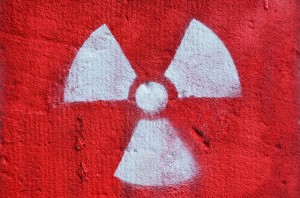It stands to reason that the few people that are aware of radon gas know it’s dangerous. In fact, many of you have probably heard the warnings before. There’s no reason to be concerned though, it won’t happen to you and it’s not a problem in your home, right?
Wrong. Radon gas is extremely hazardous to one’s health, and it can be a problem anywhere – even your home.
Most People Are Unaware Radon Gas Is a Health Hazard
 According to a national survey ordered by the Canadian Cancer Society, only one in three participants had any clue that radon gas poses serious health concerns. Nearly the same percentage of participants indicated they are aware the radioactive gas can be “very harmful.” More importantly, about a quarter — out of the 1,238 total participants — had no idea radon is even a problem, or that it exists.
According to a national survey ordered by the Canadian Cancer Society, only one in three participants had any clue that radon gas poses serious health concerns. Nearly the same percentage of participants indicated they are aware the radioactive gas can be “very harmful.” More importantly, about a quarter — out of the 1,238 total participants — had no idea radon is even a problem, or that it exists.
This isn’t an issue confined to just Canada, either. While it is estimated that 3,000 Canadians die each year from radon-induced lung cancer, more than 20,000 Americans die each year from the same thing. The most unfortunate thing about that is most of the health effects, and radon gas exposure can be easily prevented.
Test Your Home for the Presence of Radon Gas
By testing your home for the presence of radon gas, you can identify the abundance of the odorless, colorless and tasteless gas in your home. If levels are found to be above your country’s recommended action limit (4.0pCi/L in the U.S. and 200 Bq/m3 in Canada), then you can take action by installing a mitigation system either yourself or by hiring a professional.
Radon is released naturally, as it’s a radioactive decay product of elements such as uranium, commonly found in rocks and soil. When it is released outdoors, it disperses openly into the air at very low levels – so low they’re not dangerous. However, indoors and within confined spaces it builds up in great amounts becoming much more dangerous.
As people are exposed to radon gas, their risk of lung cancer increases over time similar to smoking tobacco. In fact, the risk of contracting cancer from smoking elevates exponentially when combined with radon gas exposure, as well.
Despite all of this substantial danger, you’ll be surprised to know that 96% of the survey participants have yet to test their homes for the presence of radon gas. About half of that demographic indicated they would move promptly, should elevated levels of radon be discovered in their home. The latter stat is pretty silly, especially when you consider the fact that a mitigation system is relatively inexpensive. A newly discovered radon problem is hardly a reason to move, however it is certainly a reason to take immediate action.
The online survey was conducted on October 22-19, 2014 by Angus Reid, and it included information from 1,238 randomly selected Canadian adults.
Via: CBC News (Health)


